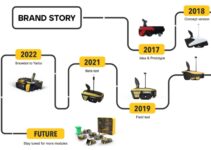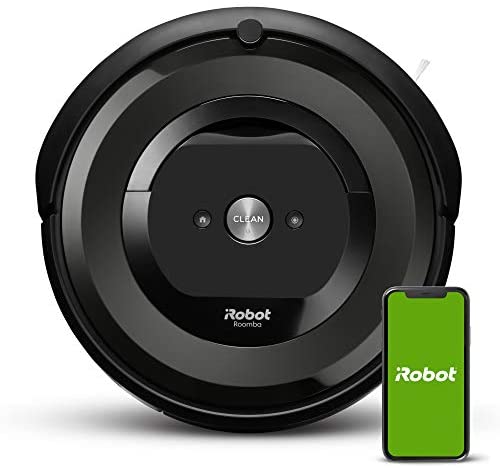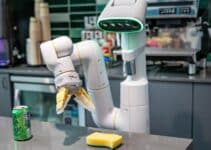By now most of you have heard about Spot, the agile mobile robot created by Boston Dynamics. If you saw Spot do his dance at either of the last two ConExpo shows, you were probably thinking: Clever, but is it practical? The answer is yes if you like to stay ahead of schedule and hate cost overruns and rework.
The Mace Group, a tech-oriented construction company out of Dublin, Ireland, recently wrapped up its first project using Spot and Trimble technology. What they found was that, as intended, Spot does what robots are supposed to do: take over the tedious and time-consuming chores to free up humans to do more value-added work.
Celtic name for an Irish dog
 Kieran HeffernanMace
Kieran HeffernanMace
The process of putting Setanta to work at Mace began with a lot of discussions starting in 2019. “We spent a year talking back and forth and figuring out how to make the application work within Mace’s workflows,” says David Burczyk, construction robotics lead for Trimble. Covid slowed progress so there was a lot of upfront planning before Trimble and Mace could physically get together as a team and start interacting with the robot.
When Trimble and Boston Dynamics co-developed the integration of Spot and the Trimble X7 3D laser scanner, that solution gave Mace the combination of technologies it needed to speed up the process. “That was the step change that we were looking for,” says Kieran Heffernan, associate director of construction at Mace. “We wanted a process that compared the automated laser scan capture and analysis against the BIM model.”
Release the hound
Mace launched Setanta on a project that was underway in 2022 to do extensive laser scans to capture the as-built details of large (warehouse size and bigger) building projects.
“We used that kind of structured environment with enclosed spaces as the most complicated level of laser scanning that would need to be done,” says Heffernan. The scans are then compared to the BIM model to look for anomalies, assess quality control and build digital twins of the entire process.
“We were doing it before as a manual process,” says Heffernan. “We had an engineering company in the field doing the laser scanning and then filtering it back to our BIM Team. And then there would be a manual check of the laser scan against the BIM model.”
Armed with the laser scanner on its back, Setanta roamed the building autonomously, stopping at multiple designated spots to scan the work. In their manual process, Mace might make one full scan of the job per week. Setanta can do three or more scans a week running autonomously.
When Setanta’s scans are run through Trimble software, the construction managers get a report that immediately shows them when something has been installed in the field and if it’s out of position or if anything needs to be done. The trial run showed that Setanta could complete an impressive 100 scans in a 10-hour period.
“That released our BIM teams to do the work they need to do from a modeling and coordination perspective,” says Heffernan. “And our construction managers benefit from the larger quantity of data that we gain and filtering that through to our team.”
With these accurate and regular measurements, crews can detect and fix anomalies immediately rather than later in the construction process when they become expensive and wreak havoc with schedules.
One very smart dog
One of the more impressive feats Setanta performed while operating autonomously in its trial run with Mace, was figuring out what to do when its path was blocked by obstacles.
“In and around the internal structure of the data center are some complicated areas like network rooms, especially at the later portions of the project,” says Heffernan. “You have a lot of people in these congested spaces and a lot of equipment cabinetry in place. We intentionally put barriers up to block its route and find out what would happen.”
When faced with these unexpected barriers, Setanta reversed course and then positioned itself on the opposite side of a set of cabinets to get where it needed to be to undertake its final scan, says Heffernan. “That was one of the scenarios where I thought we are onto something here. Not only is it doing pre-directed routes; it also has the brains to figure out how to work around obstacles efficiently and effectively.”
The next job
Following Setanta’s successful trial run in 2022, Mace plans to use its laser scanning canine on a bigger job in 2023 that will also include scanning topography for the earthmoving and site work. “It will be tied in with our project delivery and the manner in which we bid and scope the project,” says Heffernan.
On this project the engineering team will pre-record tracked missions in the field as determined by what needs to be scanned. Then in the evening, the engineer will set up Setanta in his kennel, which is a secure shelter, charging station and a place to download scans. The engineer will press to start button and off the robot will go capturing whatever data is needed, says Heffernan. “In the morning we will have fully scanned data in the data center that can be immediately shared with our BIM team,” he says.
Training the humans
 David BurczykMace
David BurczykMace
“We worked with them to establish their goals for each month of the trial, until it became clear that everyone operating the robot knew how it worked and it became part of their day-to-day operations,” says Burczyk. “From there, the Mace team was able to spread the knowledge to other team members within their organization,” he says.
On a day-to-day level, the typical users of the reality capture will be your virtual design and construction teams, people who are working with the 3D models, says Burczyk. “They are the ones who capture the information, do the comparisons, and work with the virtual prototype of the job.”
Teaching the new dog new tricks
Mace foresees additional technology extensions and uses for its robot, including giving it QR codes to read in the field and merging data with Trimble’s augmented reality XR10 helmet.
Setanta has been a big hit at Mace, driving lots of social media posts and photographs, says Heffernan. “It’s a really interesting piece of technology. We have used it in presentations to clients and it’s nice to showcase what we bring to the table. So, it’s a fun time.”
Tom Jackson is a former Equipment World editor and now writes about construction industry issues on his Substack blog Heavy Equipment Insights.


